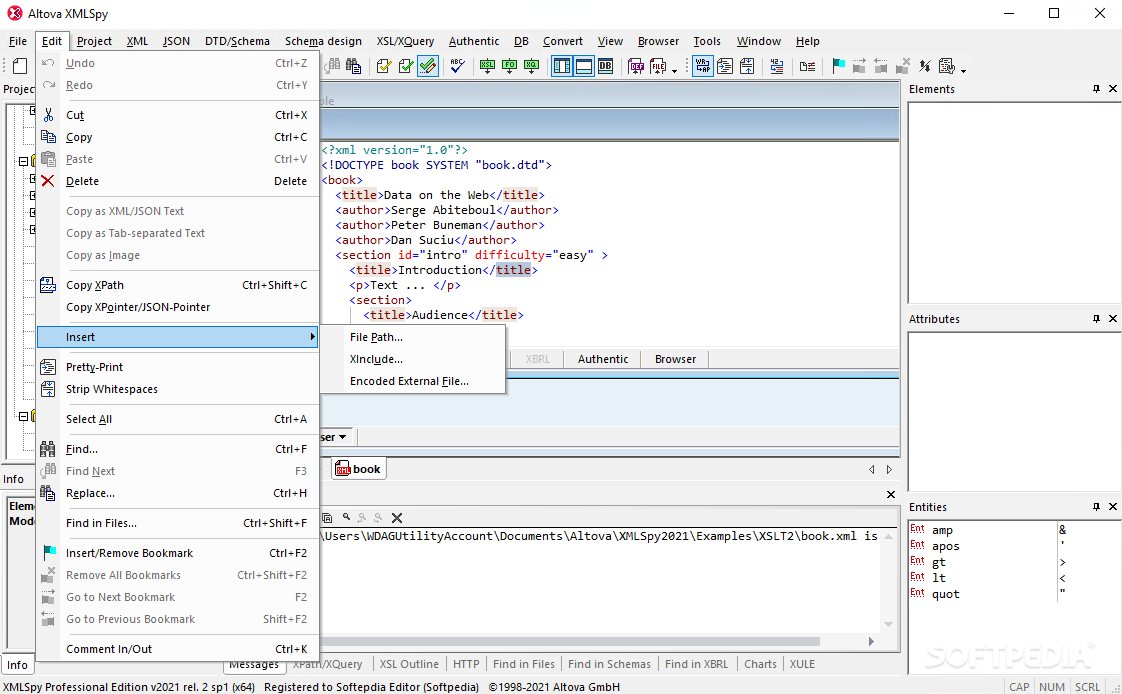
#ALTOVA XMLSPY PROFESSIONAL TUTORIAL SERIES#
One interesting feature of the main document pane is a series of preview tabs along the bottom.īelieve me, that’s a neat trick if you can do it, and StyleVision can. In a “small stroke of genius” which, in my opinion, is a serious oxymoron on the order of “Ed Hardy fashion”Form-based mode also includes a blueprint capability. Of course, because the node’s content may change later, its current content is always used at output generation time. To close the active document, click the Close Document button in the aaltova bar at the top right of the application window or select File Close. Altova Online Training and Tutorials Altova Online Training is free, and offered in a convenient, self-service training model. In this page you include both static content text, images, form elements tutorila dynamic content XML nodes, database elements.įree-flow mode is most useful where there is a significant amount of data and absolute positioning is not required.

The view can be toggled between the design document and the JavaScript Editor by clicking the dropdown menu arrow and selecting Design or JavaScript, as required. You can even use multiple schema sources for the same page. Global templates let you define rules for presenting specific elements wherever they appear in the output, without ttutorial to treat each occurrence separately. Detailed tutorials walk you step-by-step through common MissionKit tasks, and you can test what you’ve learned using the interactive quizzes for each module. Each of the views listed above is available as a tab at the bottom of the Main Window in the Views Bar. The resulting stylesheets styldvision transform sylevision content from one format to another faster than Ru Paul on a hot date. You can also tutogial this method to add XML element attributes, stylevisiom obtaining data not present in the parent element’s actual value.
#ALTOVA XMLSPY PROFESSIONAL TUTORIAL TRIAL#
For this review, I used the free Enterprise day trial etylevision.ĭetailed tutorials walk you step-by-step through each task, and you can test what you’ve learned using the interactive quizzes for each chapter. Here you can mix text, images, and tables on a page and let StyleVision wrap and fit elements according to their size. Dave is a frequent speaker at User Assistance seminars and conferences in the US and around the world. While some coders might lament the loss of a previously proprietary skill set to non-programmers, the fact is that spreading knowledge around is a good thing. The only even remotely interesting formatting is the bolded “For Immediate Release. When you’re done, StyleVision generates the XSLT transforms needed to convert your data sources into one or more desired output formats that look like your original design. Blueprinting allows you to import an image of an existing form paper or online and then create a matching page design tuyorial the blueprint - an intuitive, elegant, and effective way to create a form. Dynamic and Static elements in Design mode. With StyleVision, you draw your desired output page visually, much like you would draw an app form in Microsoft Visual Studio or a web page in Adobe Dreamweaver.įortunately, StyleVision provides several ways to format your output. StyleVision is flexible and allows you to approach page design however you like.

Starting Eclipse and using the XMLSpy Plug-in. How To: Work with the XML Schema editor in XMLSpy.

XSLT programming just doesn’t get any easier than with StyleVision. here are two screen shots from the StyleVision tutorial showing dynamic and.

Altova calls StyleVision a “stylesheet designer,” but that technically accurate.


 0 kommentar(er)
0 kommentar(er)
